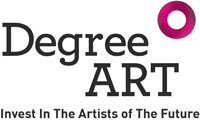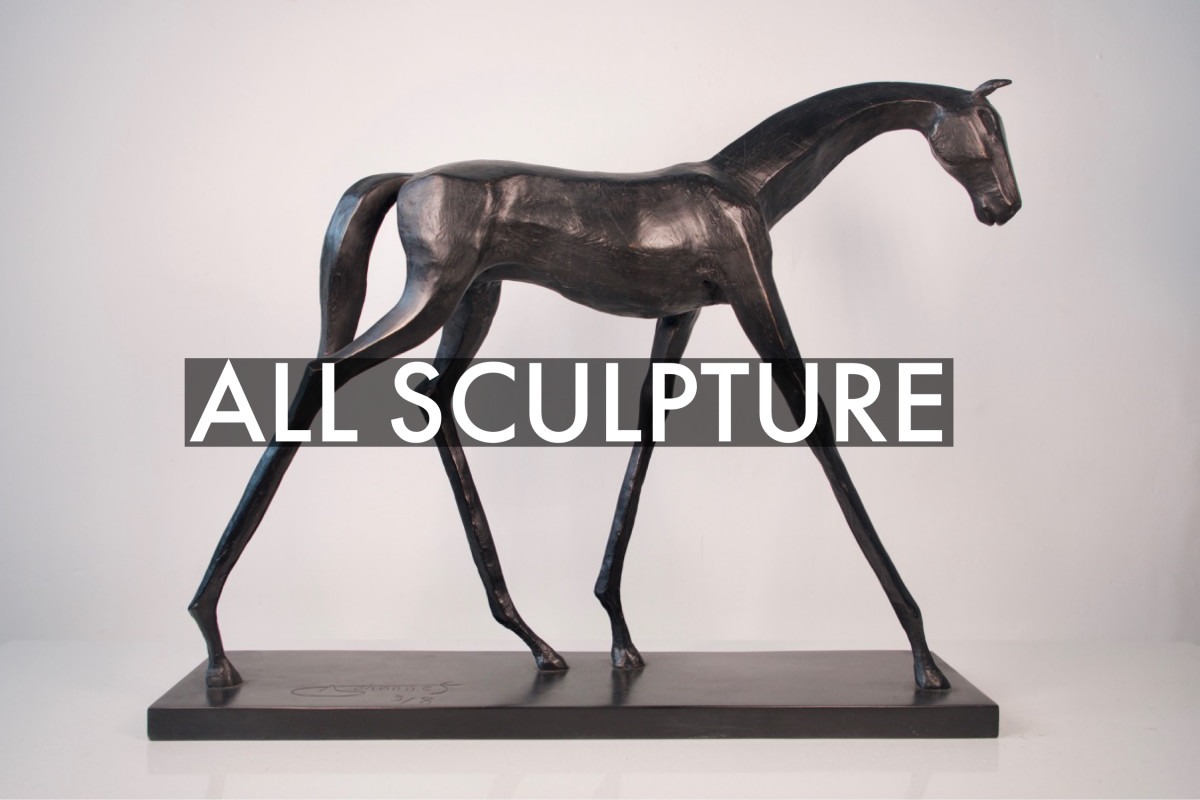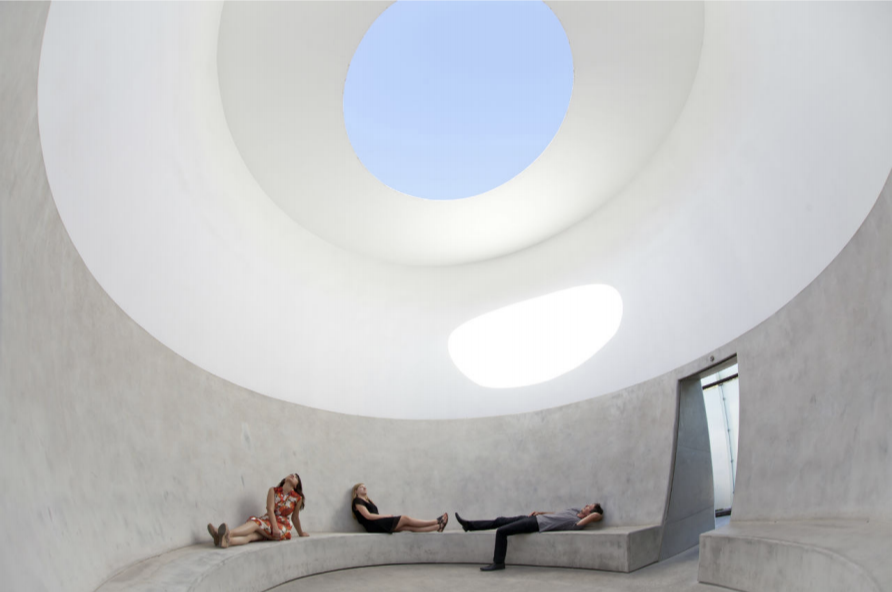Emily Thomas is a British sculptor who graduated from Chelsea College of Arts in 2018. Emily’s creative process involves the research and exploration of new places. She uses photography to document her discoveries of architecture and analyses the thematic, repetitive features of the subjects' structural forms and materiality. Collage is then used as a technique to visualise the possible outcomes of her photographs as 3D abstract forms. Emily's final works aim to reflect place identity, whilst exploring the boundaries between sculpture, painting, object and architecture.
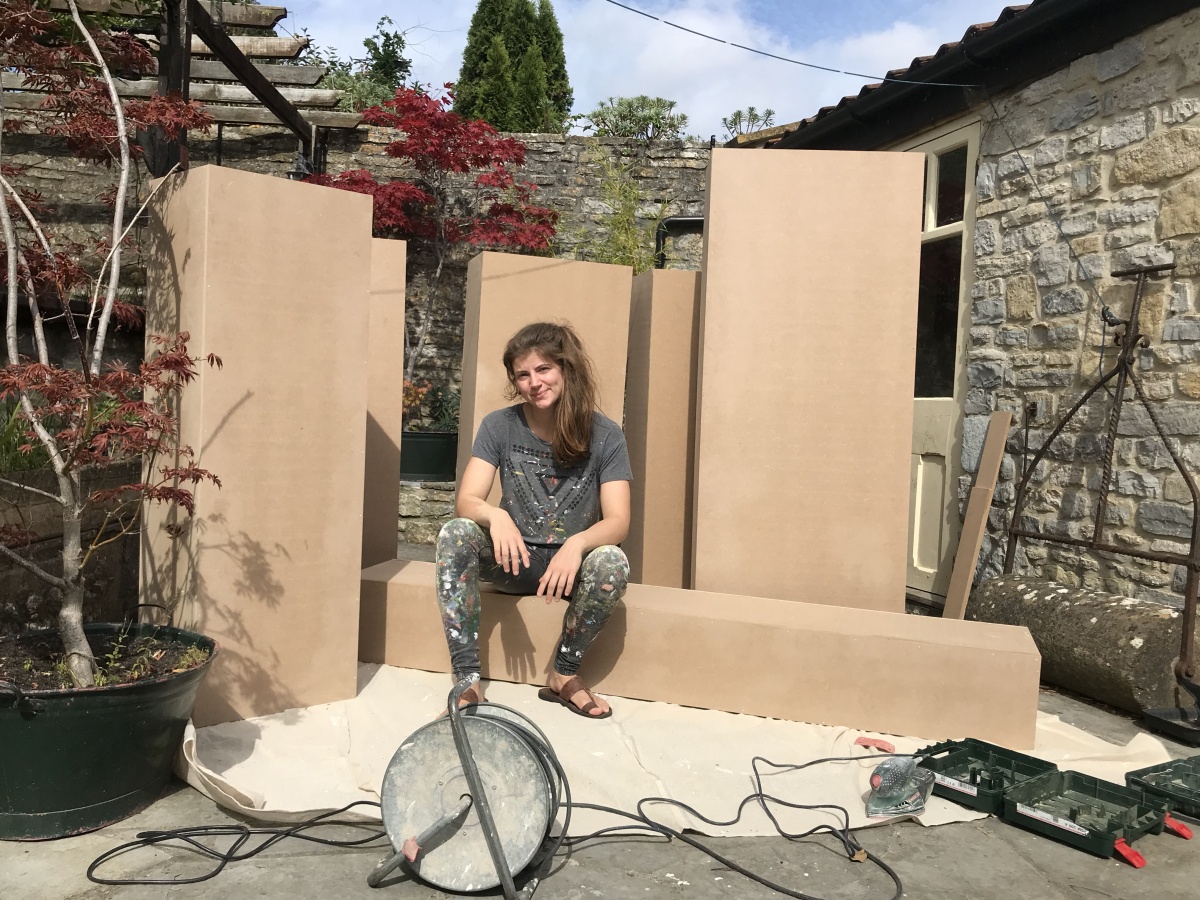
1) Which art movement do you consider most influential on your practice?
I am interested in how architecture serves as an indicator of place identity in terms of history, society and culture. Consequently, the Bauhaus movement has become a strong influence on my practice. Aesthetics and function were considered of equal importance in the design processes, making the structural form, materiality and colour of Bauhaus architecture a key indicator of place identity and reflection of the needs of the time. Bruno Taut’s ‘Hufeisensiedlung’ (1928, Neukölln, Berlin) is a key example of this. With the architectural company GEHAG, Taut was commissioned to design large scale social housing within a city garden environment. After the industrial revolution there was a lack of housing and this was greatly needed. The budget was low, and materials were limited. Taut therefore used expressive bright colours and innovative structural form to encourage social interactions between neighbours and evoke a sense of hope and positive change for Berlin’s future. This included a flat roofed housing estate in the shape of a horse shoe. My sculpture ‘Hufeisen’ was inspired by this project. It signifies the shape of Taut’s ‘Hufeisensiedlung’, along with the thematic bright colours found throughout his designs in the neighbourhood.
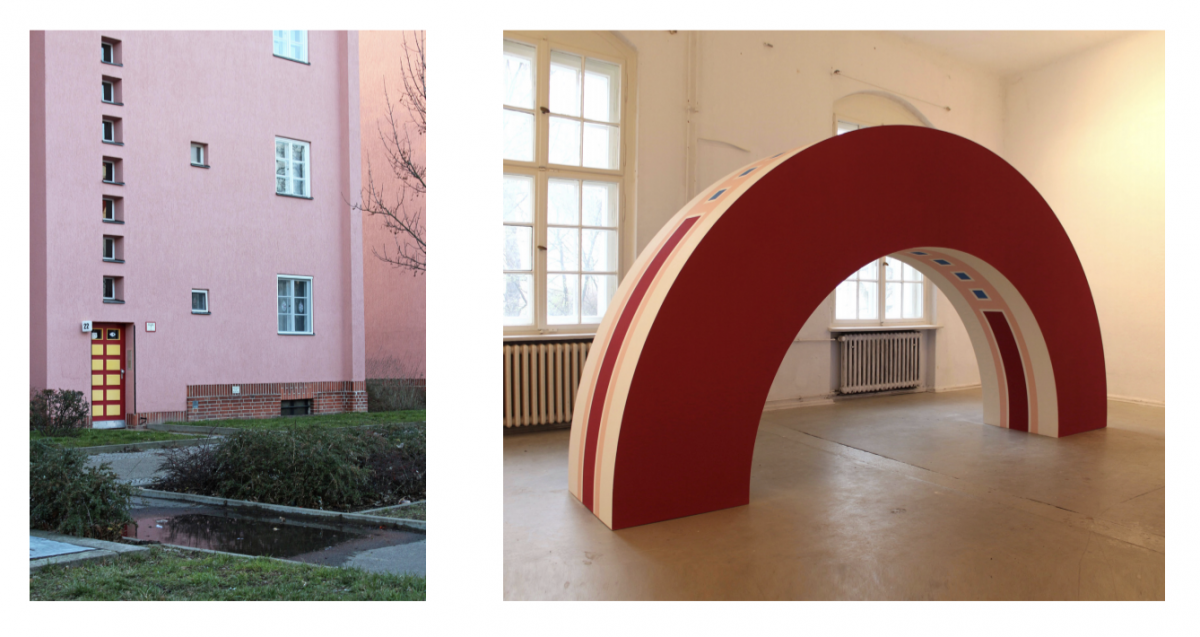
2) Where do you go and when to make your best art?
Since graduation I have been working at a number of different artistic residency programmes. These include Glogauair Berlin, La Escocesa Barcelona and Soulangh Cultural Park Taiwan. I have therefore been living across four different countries and do not have a common workplace. I usually work with large scale sculpture and woodwork, so having access to a studio and wood workshop is important. Artist residencies provide me with access to these facilities and I enjoy the process of discovering new places and learning from the work processes of different cultures.
3) How do you describe your 'creative process'?
My creative process starts with walking as research to explore new places. Throughout my journeys, I take note of the thematic repetitive features of the buildings that I discover, including their structural forms, colours and materiality. These aspects of architecture have the ability to communicate the historical, social and cultural characteristics of a place. I document this with photography and then carefully select the images that communicate my discoveries and thought processes, taking both conceptual and aesthetic factors into consideration. I use collage as a technique to study my images. This allows me to visualise the possible outcomes of my photographs as abstract sculptural forms. My favourite moment throughout the creative process is the physical making of my sculptures in the wood workshop. I enjoy experimenting with materials and working with technicians to discover new tools and methods. Seeing the sculptures come to life is super exciting.
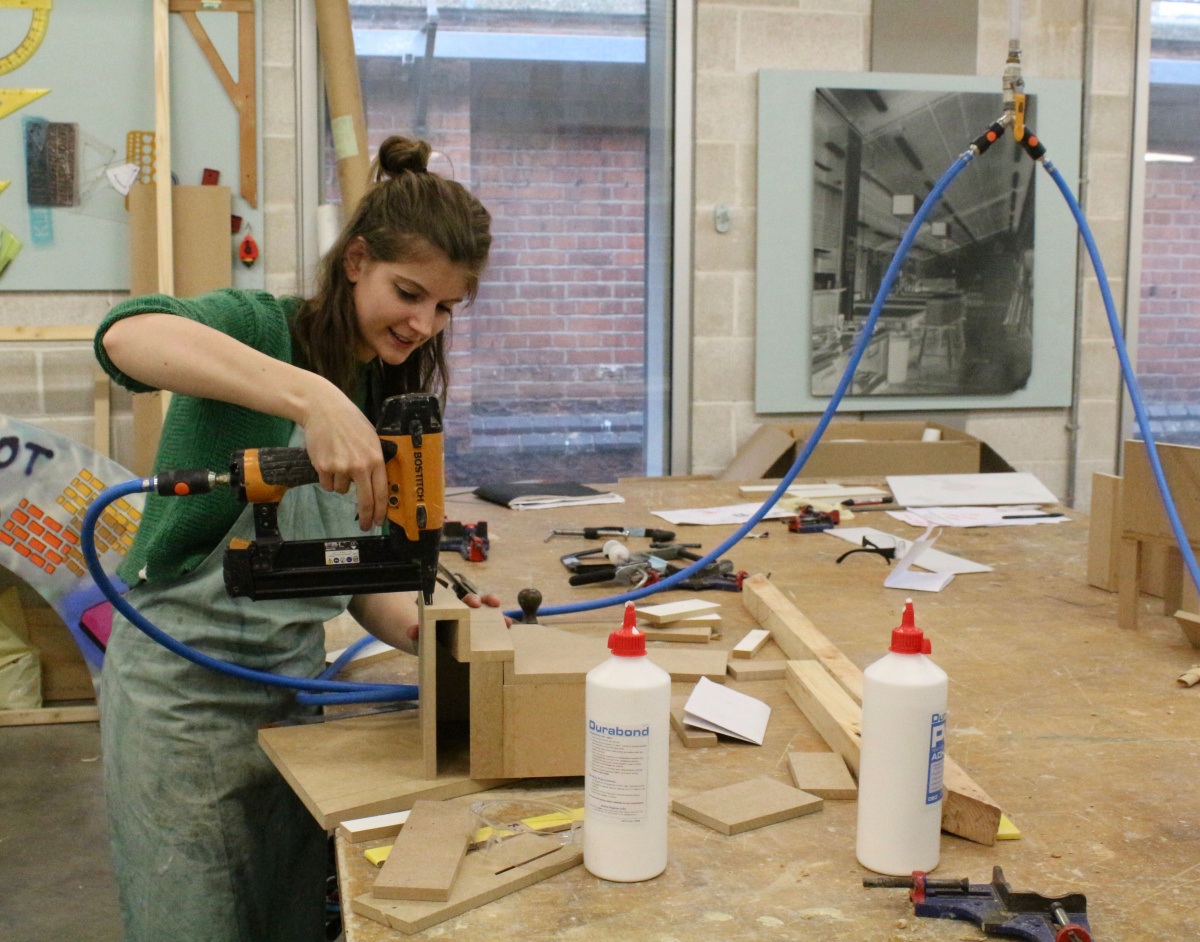
4) Which artist, living or deceased, is the greatest inspiration to you?
I would find it difficult to specify one person as many different artists have inspired me in different ways. For example: David Hockney inspired my love of colour when I saw his exhibition ‘David Hockney: A Bigger Picture’ at the Royal Academy of Arts in 2012. This was the first major art exhibition I had been to so it has always stuck with me. Ai Weiwei inspires me because of his determination and resilience to express his views, fight corruption and continue to create his artwork despite the extreme suffering he has experienced as a result. Will Cruickshank repurposed grain silos into studios and workshops on his farm in Essex. I would love to build my own sustainable home and workplace and therefore find this project very inspiring, as well as his work in itself. The artist that has had the most influence on my practice is Dominic Beattie, who opened my mind to the possibilities of painting and the flexibility of medium boundaries. This encouraged me to experiment with three-dimensional painting and sculpture through photography and collage.

5) If you weren't an artist, what would you do?
If I had not become an artist, I think I would have been a musician. I grew up in a family of classical musicians and studied the clarinet at a specialist music school from a young age. My love of art conflicted with my responsibilities as a musician at the school and I made the decision to study art at university rather than music. Many of my closest friends are musicians and I still play when I can. If I had followed a career in music, I think I would have enjoyed playing the clarinet in West End shows.
6) What do you listen to for inspiration?
I listen to music that creates a motivational and fun work environment while I am making art. This could be anything from Abba, Britney and Beyonce to Fleetwood Mac, David Bowie and The Beatles.
7) If you could own one artwork, and money was no object, which piece would you acquire?
If I had a house with an attic room, I would love to have a site specific skyspace by James Turrell.
8) If your dream museum or collection owner came calling, which would it be?
For me, it is not about where my artwork ends up or on what scale as long as I have the means to keep creating! This being said, my favourite art gallery is the Fold Gallery in London. Many artists who have inspired my practice have exhibited there. The gallery has an exhibition program that focuses on materiality, particularly in sculpture and painting. It would be super cool to exhibit there one day, and to meet and collaborate with artists that have similar interests.
9) What is your key piece of advice for artists embarking on a fine art or creative degree today?
Use the time to build life experiences and form relationships with awesome creative people. Experiment with your work as much as you can and make the most of having access to studios, technical workshops and advice from super talented technicians and tutors. Most importantly, have a great time and don’t take it too seriously!
10) What is your favorite book of all time (fiction or non fiction)?
Harry Potter and the Prisoner of Azkaban!
11) If you could hang or place your artwork in one non traditional art setting, where would that be?
As my artwork is inspired by places, I would enjoy placing my sculptures in the exact areas they represent. In my degree show for example, I presented a series of structures representing an intriguing research walk I took across London. It would give an entirely new dimension to my work if I were able to place the works in their specific locations across London: ‘Hackney, I love you. I lost you.’ is an abstract re-creation of a doorway that I discovered and photographed outside an abandoned building in Hackney. Materiality, form and colour have been used to conjure the sense of place and provide insight into historical, social and cultural characteristics of the area. I chose to begin my journey in Hackney after reading an article about Jenny Lewis’ ‘Hackney Studio Project’. In this work Lewis photographed artists in their Hackney studios. Since she started the project many of these artists were forced to leave the area due to gentrification and rising costs. The Guardian interviewed some of these artists to learn about their experiences. ‘Hackney, I love you. I lost you.’ was originally quoted in this article from accessories designer Fred Butler. This seemed like a fitting title for my work, as the imagery created evokes a ghostly atmosphere of the creative community. This is most apparent in the photographic print on canvas that I built into the surrounding structure. The print is a result of my original photograph, taken of a section of the doorway. The sheet music, graffiti and splashes of paint originally intrigued me, and made me consider how these features got there, who put them there, and why. The texture of the canvas creates a painterly effect, making it look like an original painting, or in this case a replica of the site. If I were to revisit the abandoned building and doorway that this work was inspired by, I would not be surprised to find that it no longer exists. Placing the sculpture there would emphasise and prove the persistence of gentrification in London, through an artwork which was so heavily influenced by the dying culture of the neighborhood. It would also act as a kind of memorial.
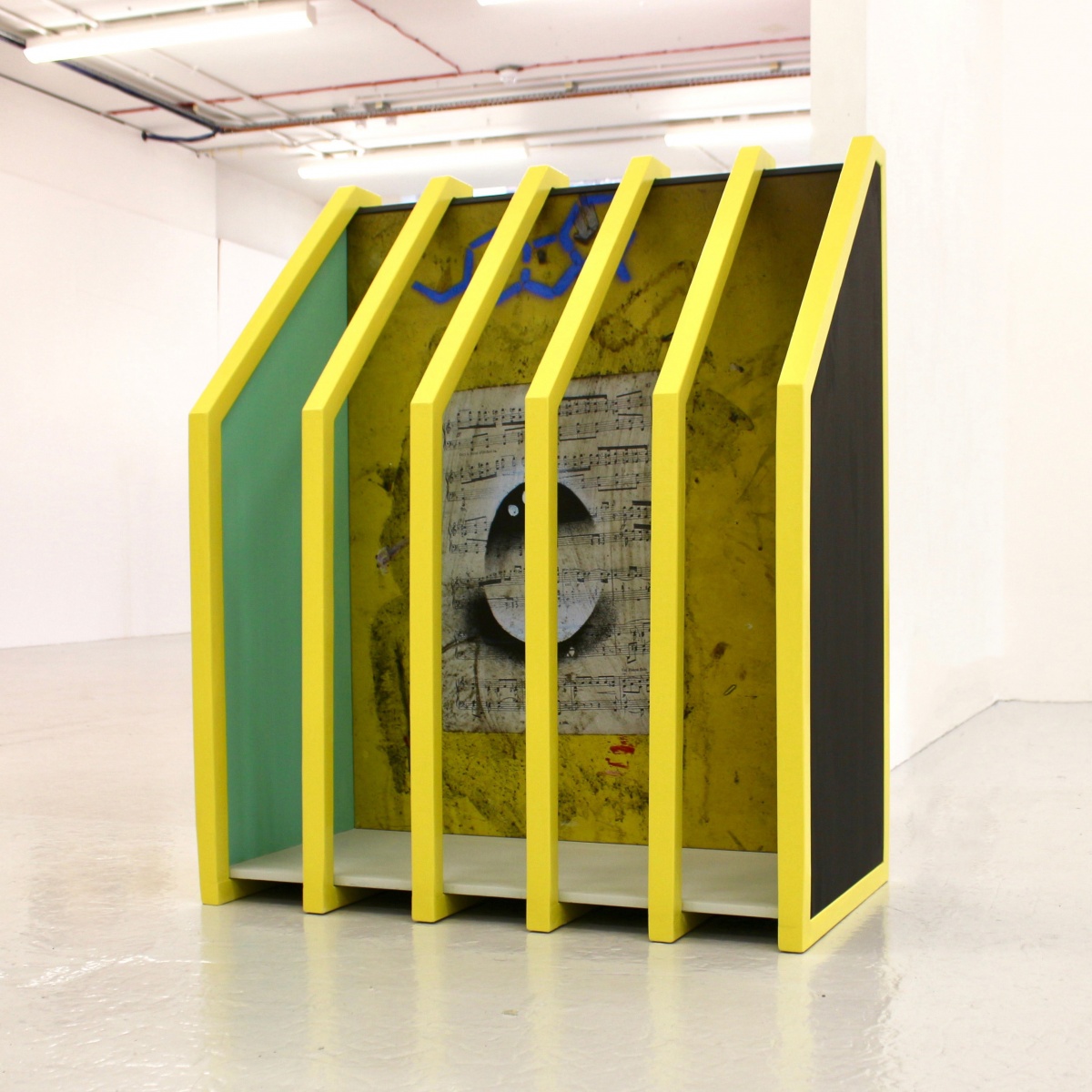
12) What was the biggest lesson your university course or time studying taught you?
Taking risks and making mistakes will develop your practice and skills, allowing you to explore new techniques and expand your creative mindset.
13) And finally, if we were to fast forward 10 years, where would we find you?
I am asked this question often and so far I have always given the same answer: Part of my love of being an artist is that I don’t know what is going to happen. I have many ideas and many dreams, but nothing is ever set in concrete. I am happy for my future career path to twist and turn – it keeps me on my toes. In that sense I don’t see myself anywhere in particular in ten years time. I have thought about the possibility of doing a master's degree, and I also like the idea of running my own artist residency programme. One of my dreams from a very young age was to build my own house. I love the idea of creating a semi-transportable home just outside of the city. I sometimes get very excited about this and begin to imagine having on-site studios for artists, a co-working woodshop, a jazz club etc. Maybe I’m getting a bit carried away, but who knows what the future holds! I enjoy traveling and hope that I am able to visit as many countries as possible. Carrying out exhibitions abroad whilst being immersed within different cultures and collaborating with other artists and practitioners, has been both inspiring and rewarding. I hope that I am able to continue doing this as much as possible in the future, and I am excited about the opportunities and collaborations that could emerge.
Learn more about Emily and discover her collection of sculpture





